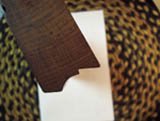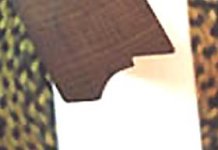I bought this moulding plane thinking I was getting a 1/2" quarter round with a fillet, but (hopefully) as you can see from the photo, the fillet is not perpendicular to the fence. As a result the fillet is undercut rather than vertical. I, for the life of me, cannot get this plane to cut this configuration.
Am I doing something wrong?
Has anyone ever seen this configuration?
The condition of this plane has to be rated "near perfect". I wonder if it has ever been used, but I'm thinking there may be a reason for that.
-Chuck
Am I doing something wrong?
Has anyone ever seen this configuration?
The condition of this plane has to be rated "near perfect". I wonder if it has ever been used, but I'm thinking there may be a reason for that.
-Chuck


